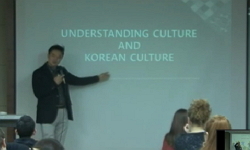Background: To meet need for a subspecialized skin type system since Helena Rubinstein in 1910, the Baumann skin type(BST) system was proposed. Objectives: To evaluate the distribution and influencing factors of the BST in Korean women. Methods: BST q...
http://chineseinput.net/에서 pinyin(병음)방식으로 중국어를 변환할 수 있습니다.
변환된 중국어를 복사하여 사용하시면 됩니다.
- 中文 을 입력하시려면 zhongwen을 입력하시고 space를누르시면됩니다.
- 北京 을 입력하시려면 beijing을 입력하시고 space를 누르시면 됩니다.
P120 Baumann skin type in the Korean female population = P120 Baumann skin type in the Korean female population
한글로보기https://www.riss.kr/link?id=A102282126
-
저자
( Myungsoo Jun ) ; ( Sung Ku Ahn ) ; ( Hana Bak ) ; ( Byeong-Deog Park ) ; ( Seung Phil Hong ) ; ( Sang-Hoon Lee ) ; ( Seong-Jin Kim ) ; ( Hyung Joo Kim ) ; ( Dong Hoon Song ) ; ( Pok Kee Min ) ; ( Ja Woong Goo ) ; ( Tae-Hyun Kim ) ; ( Chang-Keun Oh ) ; ( Seung Hyun Chun ) ; ( Sewon Lee ) ; ( Yeol Oh Sung ) ; ( In-Bum Sohn ) ; ( Hyung Jin Ahn ) ; ( Kun Park )
- 발행기관
- 학술지명
- 권호사항
-
발행연도
2016
-
작성언어
-
- 주제어
-
KDC
500
-
자료형태
학술저널
-
수록면
393-394(2쪽)
- 제공처
-
0
상세조회 -
0
다운로드
부가정보
다국어 초록 (Multilingual Abstract)
Background: To meet need for a subspecialized skin type system since Helena Rubinstein in 1910, the Baumann skin type(BST) system was proposed. Objectives: To evaluate the distribution and influencing factors of the BST in Korean women. Methods: BST questionnaires were administered to 1,000 Korean women. The possible responses were as follows: oily(O) or dry(D), sensitive(S) or resistant(R), pigmented (P) or non-pigmented(N), and wrinkled(W) or tight(T). The correlations of the BST and the subjects’ age, province, ultraviolet(UV) ray exposure, drinking and smoking habits, and blood type were assessed. Results: The OSNT, DSNT, DRNT, and OSNW skin types were the most common skin types. The O, S, P, and W types accounted for 46.6%, 68.8%, 23.2%, and 31.9%. The proportion of the O and S type was the highest in Gyeongsangbuk-do (55.0%) and Seoul (77.2%), while that of the P and W type was the highest in Gyeongsangbuk-do (33.0%) and Chungcheong-do (39.0%). The O type decreased in the higher age group, whereas the P and W type showed a reverse tendency. In smokers, the W type was significantly higher than in the non-smokers(66.3% vs. 24.1%, p<0.05). Conclusion: The 4 most common BST in Korean women were OSNT, DSNT, DRNT, and OSNW. The comparison between the 4 BST parameters according to various patients- and environment-related factors, significant differences in frequency were observed. Therefore, a more individualized and tailored skin care according to personal skin type is necessary.
동일학술지(권/호) 다른 논문
-
Atypical mycobacterial diseases
- 대한피부과학회
- ( Moo Kyu Suh )
- 2016
-
Leprosy on Korea, 2001-2015: situation and perspectives
- 대한피부과학회
- ( Jong-pill Kim )
- 2016
-
- 대한피부과학회
- ( Seok Don Park )
- 2016
-
- 대한피부과학회
- 박준수 ( Joonsoo Park )
- 2016




 KISS
KISS


